Tis the season for cozy comfort foods, even here in Los Angeles where we’re finally enjoying some gloomy mornings and chilly nights. I’m a huge fan of curries for warming nourishment, and often find them to be a more satisfying alternative to soup. I love lentils in curry, and what better base for a rich and hearty curry than coconut milk? Stir in some tender baby spinach leaves at the end, serve the curry over a scoop of your favorite cooked whole grain, and sprinkle on some diced radish for a little freshness and crunch, That, my friends, is a perfectly delicious and nutritious way to fill your bellies on a chilly day.
The complex flavor of this particular dish belies the relative simplicity of its preparation. You’ll tend to it for the first few minutes to ensure that the aromatics and spices bloom evenly without burning, but after that it simmers on its own until the lentils are cooked through, requiring only an occasional stir to keep everything cohesive and prevent anything from sticking to the bottom of the pot. This curry is packed with fresh aromatics and fragrant dried spices, and a healthy dose of tamarind paste adds a sour citrusy punch to cut all those warm flavors.
Regardless of the region or cuisine from which it originates, the secret to making a proper curry from scratch is to use the freshest spices you can find, and to “bloom” the spices by gently frying them in oil just until they release their aromas and begin to toast. Many of the flavor compounds in spices are fat-soluble, so frying maximizes their flavor and ensures that those aromatic compounds are distributed evenly throughout the dish. Trust me, if you’re accustomed to just dumping the spices into a pot along with all the other ingredients and simmering everything together in a single step, you’re missing out on a ton of flavor.
Most of the spices in this dish are relatively common, except perhaps for the nigella seeds and the tamarind paste. Nigella seed (aka black cumin, black caraway, or onion seed) is a dry-roasted seed with flavor notes of onion, oregano, and black pepper. It’s popular in Indian and Middle Eastern cuisines, and a standard component of curries. You can typically find nigella seeds in any store that carries a good selection of Indian or Middle Eastern ingredients. They’re little seeds that look sort of like black sesame, but they have a more elongated teardrop shape.
Tamarind paste is a thick, sticky puree of the fruit from tamarind pods; it looks a lot like molasses but it’s worlds different. The flavor is quite sour and you’ll often see it cut with sugar or honey to temper the pucker power, but the inherent sweetness of the coconut milk in this dish provides the perfect balance without any added sugar. Tamarind is a wonderful alternative to citrus juice or vinegar when you want to add an astringent punch to a dish. I use it in all sorts of recipes, from eggs, to barbecue sauce, to curry (obviously). I see jars of tamarind paste at regular supermarkets these days, but if yours doesn’t carry it you can find it at specialty stores or purchase it online.
One last note about the aromatics: if you can source fresh turmeric I really recommend using it instead of the dried ground powder; the flavor and aroma are more potent and complex. Most well-stocked supermarkets carry fresh turmeric these days – look for it in the produce section near the fresh ginger. (Random food geek note: though often referred to as roots, turmeric and ginger are technically rhizomes. A rhizome is a plant stem that grows underground horizontally, and has the capacity to store starches and proteins and produce new shoot and root systems for a plant. Not that you needed to know that, I just think it’s cool.)
Anyway this is what fresh turmeric looks like. Peel it as you would fresh ginger – I like to scrape off the thin skin with the edge of a spoon. As you peel and grate the turmeric you’ll discover a bright, carrot-like orange hue and slightly musty, peppery fragrance hiding beneath that papery skin. You’ll also notice that it stains everything bright yellow on contact, so I usually wear gloves when handling fresh turmeric.
The rest of the ingredients in this curry are pretty unfussy. (Yes, that’s an actual word.) Be sure to use standard brown, French green, or black Beluga lentils, because red and yellow split lentils fall apart too easily and will turn the dish into more of a soup, and I like the texture of the individual lentils in this dish. Also feel free to substitute another green for the spinach here – I’ve made it with Swiss chard, baby arugula, and fresh radish tops, and all were terrific alternatives. I do recommend using tender greens as opposed to tougher ones here because they wilt pretty much immediately, so they’ll stay vibrant and won’t require extra cooking time.
A final note: canned coconut milk varies in thickness across brands, but as long as you use the full-fat variety you’ll get the proper consistency. Please don’t use light coconut milk here as it’s very watery and the finished dish will lack the body we’re going for.
Okay, ready to cook up this fantastic, comforting vegan curry? Get the spices and aromatics blooming, and once you smell those wonderful aromas and the carrot and shallot have softened a bit, add the tamarind paste, lentils, coconut milk, and salt.
You may see some oil floating on the surface at first – that’s totally normal, and most of it will emulsify back in while it cooks. A good, authentic curry usually “splits” anyway, meaning that some of the fat separates out. It was also really chilly in my kitchen when I shot this, so even though I shook the coconut milk before pouring it in some of the cream was still solid when I added it. Those chunks melted in seconds.
After you’ve added all your milk and stock it will look like an awful lot of liquid. Trust me, this will reduce down to a creamy, luxurious sauce.
Once the lentils are just tender and cooked through and the sauce is reduced, stir in your greens to wilt, and adjust the seasoning to taste with salt and pepper. Stir in the cilantro, and you’re done! Yes, it’s that easy. Serve with your favorite cooked grain – I used sticky bamboo rice for this batch – and garnish with finely diced radish for a nice fresh crunch. Dig in, and enjoy!
- 26g (2 Tbsp) coconut oil
- 1 Tbsp finely grated fresh ginger
- 1 Tbsp finely grated fresh turmeric (or substitute 1 tsp dried powder)
- 2 tsp minced fresh garlic
- 36 g (¼ cup) minced shallot
- 1 large carrot, small dice (yield ½ cup)
- 1 tsp whole cumin seed
- 1 tsp whole nigella seed
- 1 tsp ground coriander
- ½ tsp whole mustard seed
- ½ tsp cayenne
- 10 ml (2 tsp) tamarind paste
- Kosher salt
- 200g (1 cup) green, brown, or black lentils
- 1 14-oz can full fat coconut milk
- 300 ml (1 ¼ cups) low sodium vegetable stock or water
- 6 oz baby spinach
- Freshly ground black pepper
- 4 tsp chopped fresh cilantro*
- Cooked whole grains (e.g. quinoa or rice) for serving
- Finely diced radish for garnish
- Bloom the aromatics: In a large saucepan over medium heat, warm the coconut oil. Add the ginger, turmeric, garlic, shallot, carrot, coriander, cumin seed, nigella seed, mustard seed, cayenne, and a generous pinch of salt. Cook, stirring occasionally, until the vegetables are softened and the spices are very fragrant, 3-4 minutes.
- Cook the lentils: Add the tamarind paste, lentils, coconut milk, veg stock (or water), and ¾ teaspoon salt. Stir everything together, turn the heat to high, and bring the mixture to a boil. Reduce to simmer, and cook, stirring occasionally, until lentils are cooked through and liquid is reduced to a thick sauce, about 25 minutes. (Lentils should be tender enough to bite through easily, but they should hold their shape - you don't want them mushy or disintegrating.)
- Finish the curry: Turn off heat and stir in spinach to wilt. Season to taste with a few grinds of pepper, and additional salt if desired. Stir in cilantro.
- Serve: Ladle curry over cooked rice or quinoa, and top each serving with a sprinkle of diced radish.
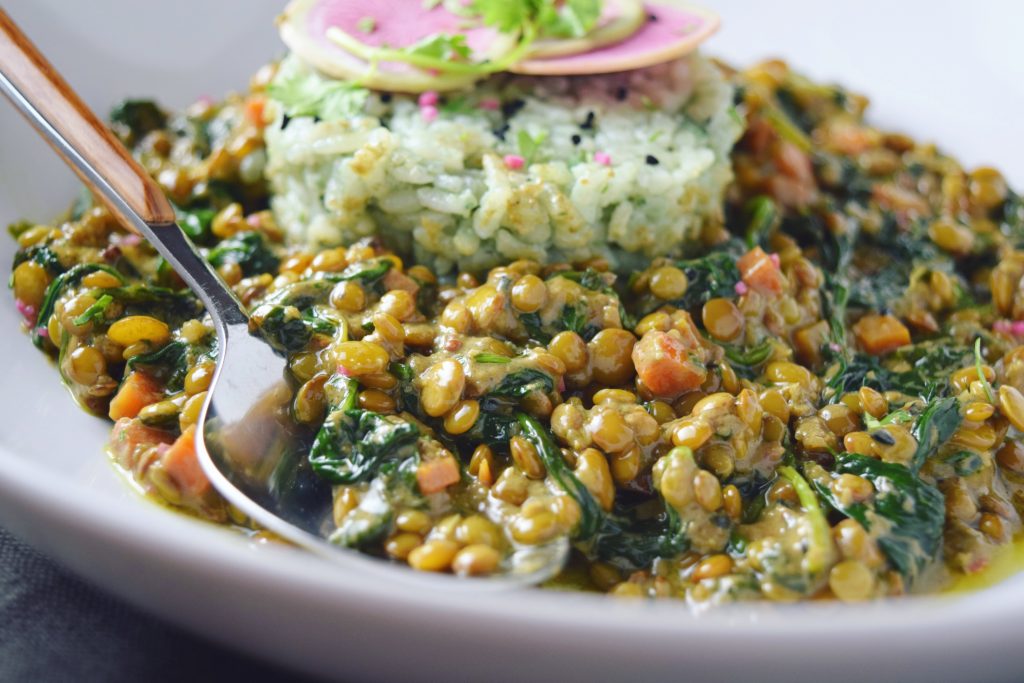
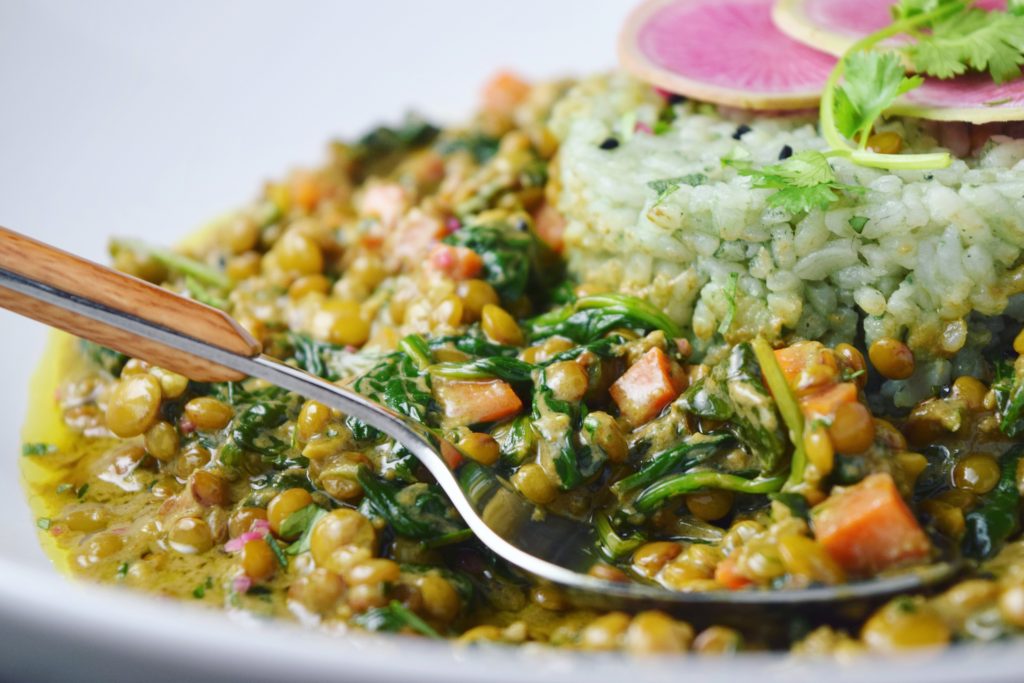
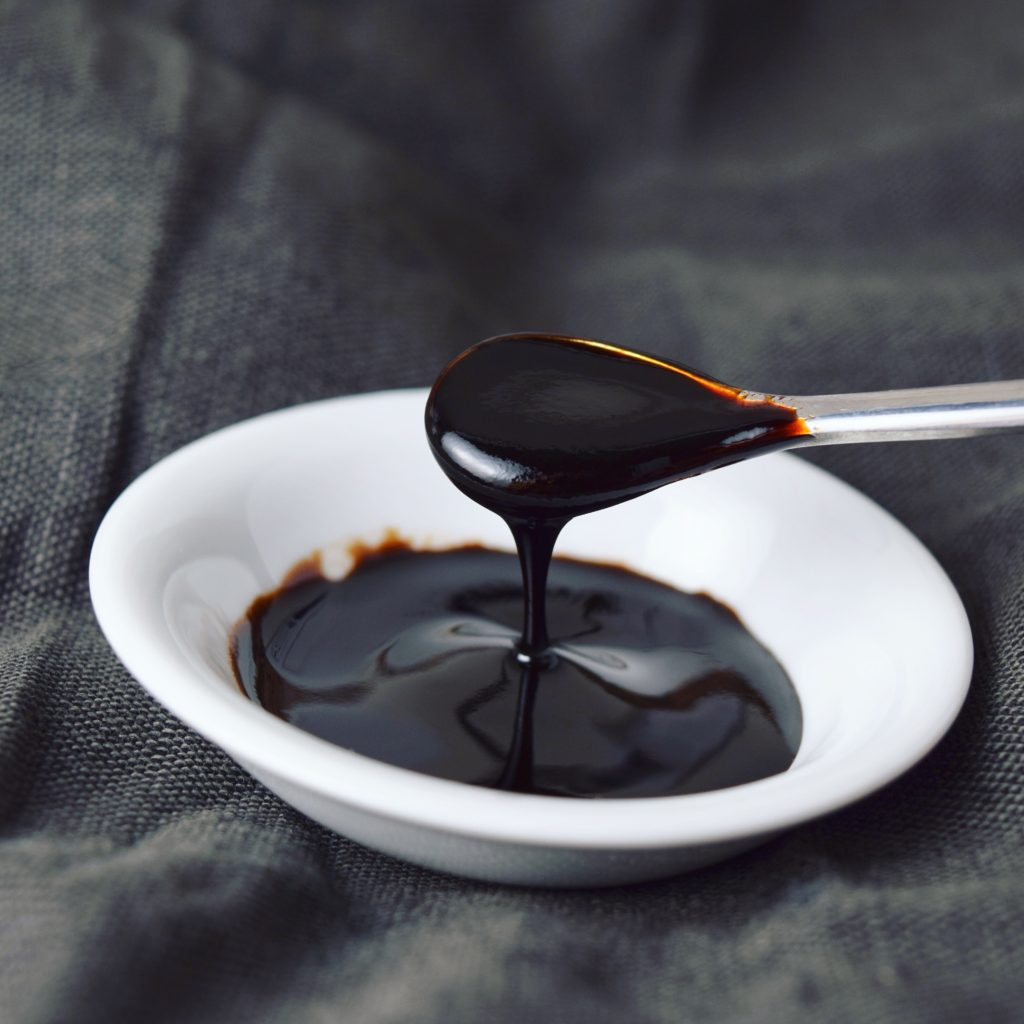
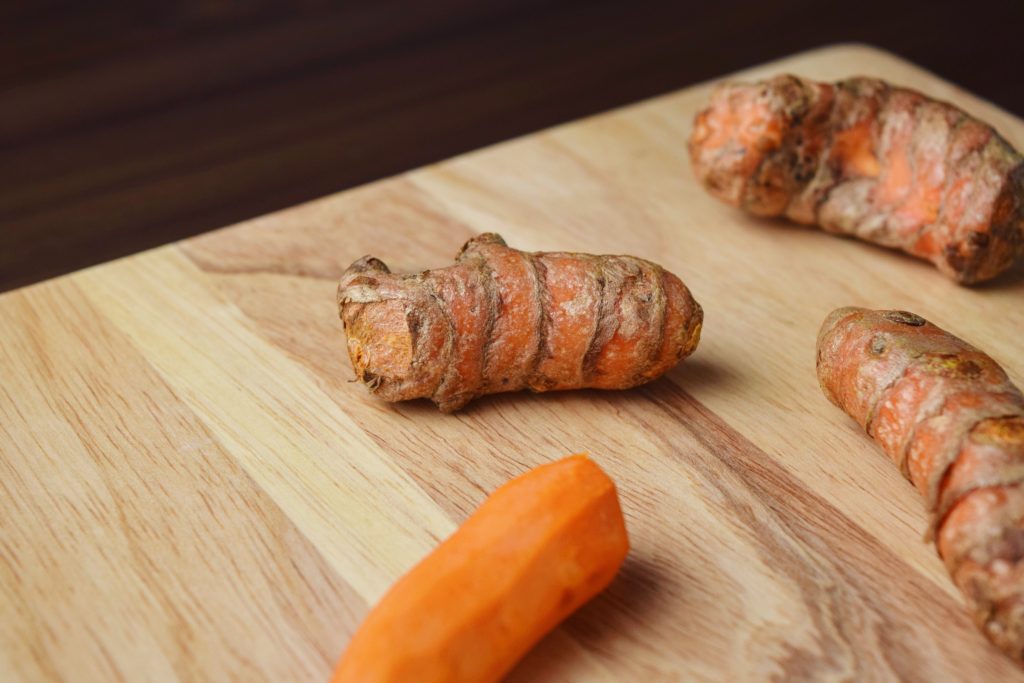
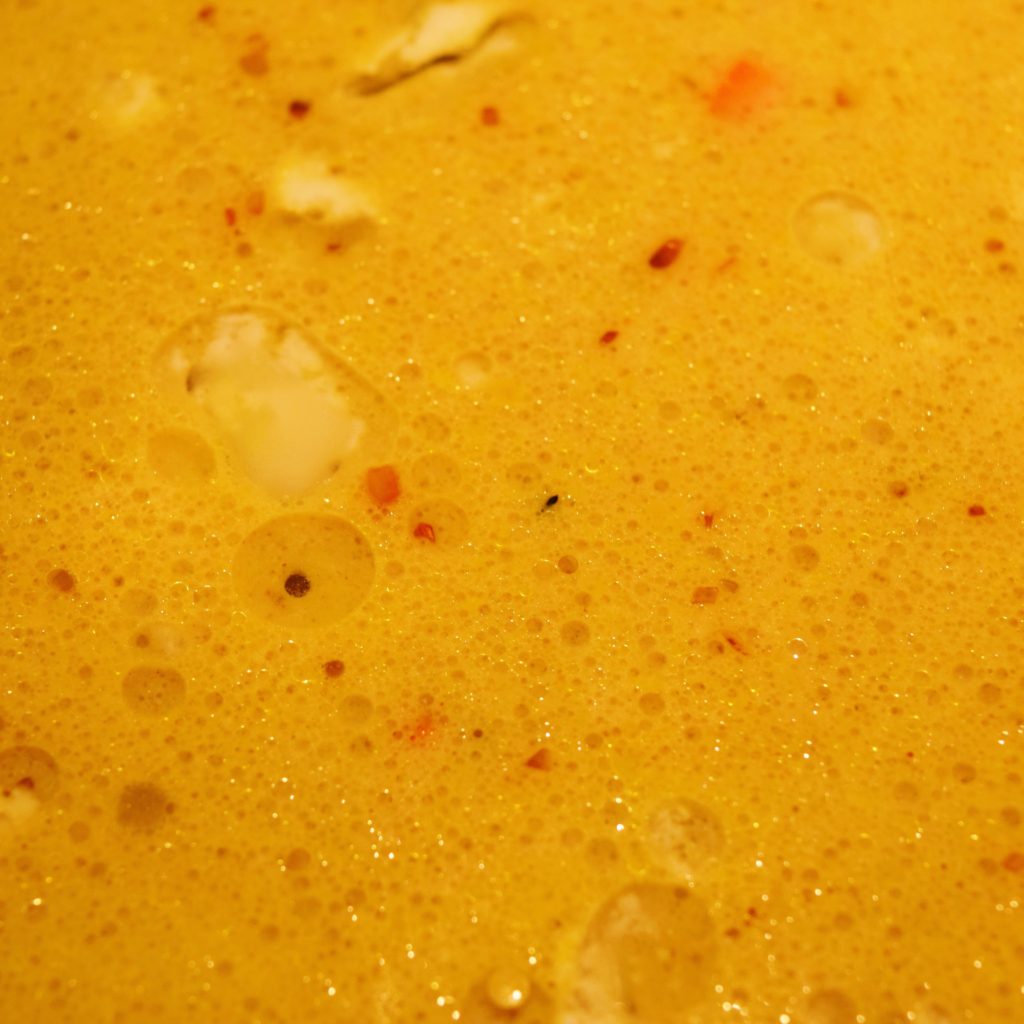
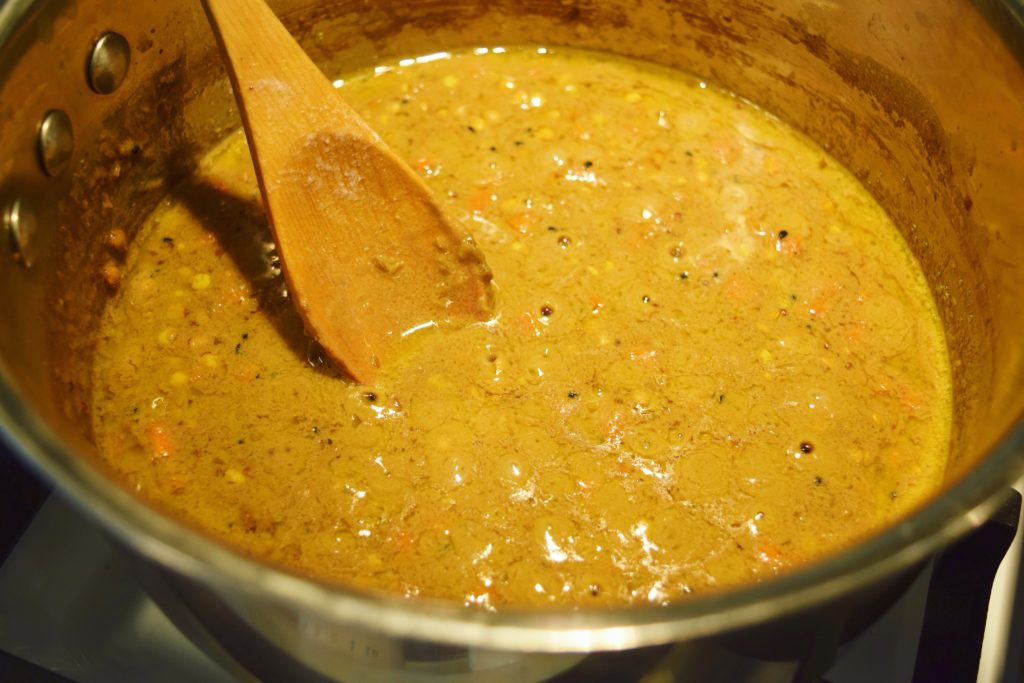
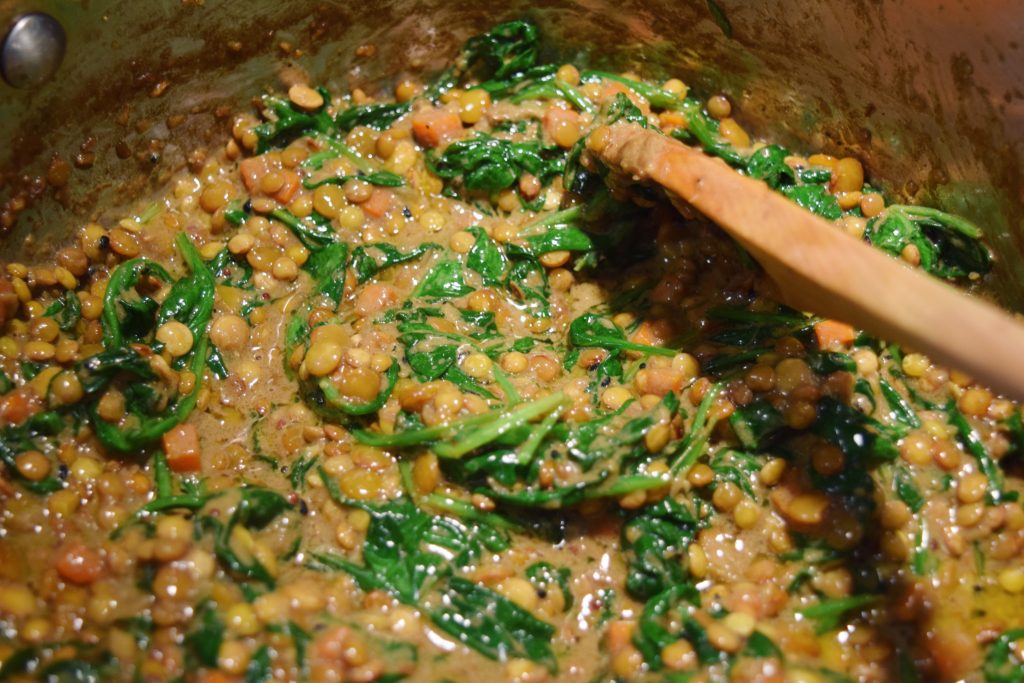
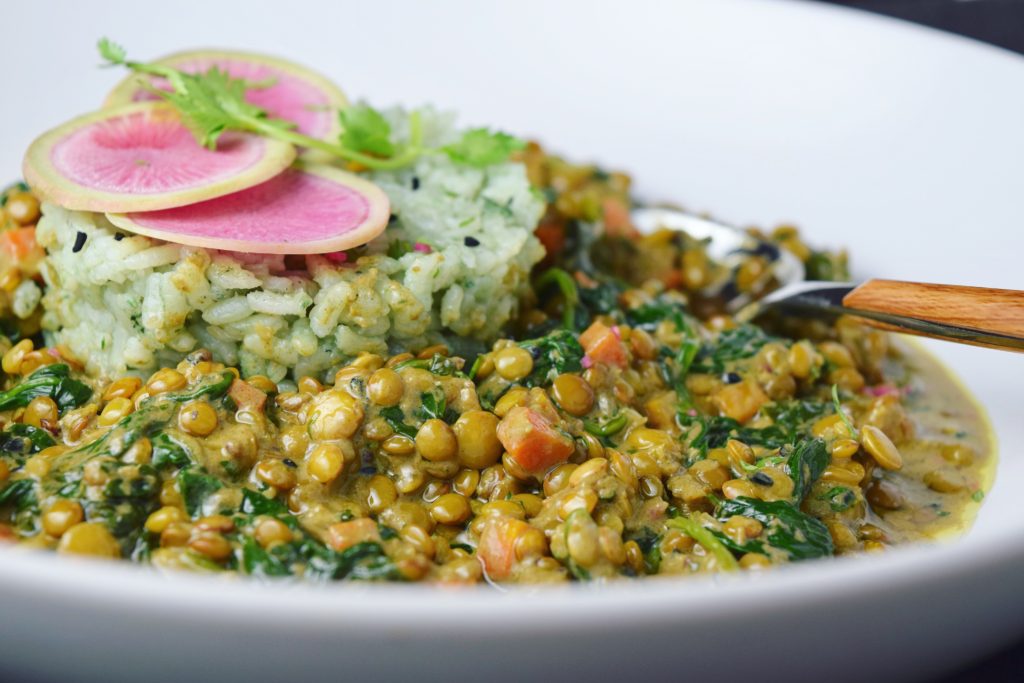


Took these on a camping trip. We had them on the last night, after a long rainy day when everybody was tired of doing dishes and just wanted comfort food while packing up. I spread the curry as thin as I could with rice, and people were STILL scraping the pot clean. Everyone raved.
I am obsessed with this dish since being introduced to it. It’s perfect for weekly meal prepping. It provides the nourishment to get me through a long day and the satisfaction of eating something delicious and comforting.
Tara I’m thrilled you love this dish! Thank you for the review – I hope you find other recipes here on the blog that you enjoy just as much 😊